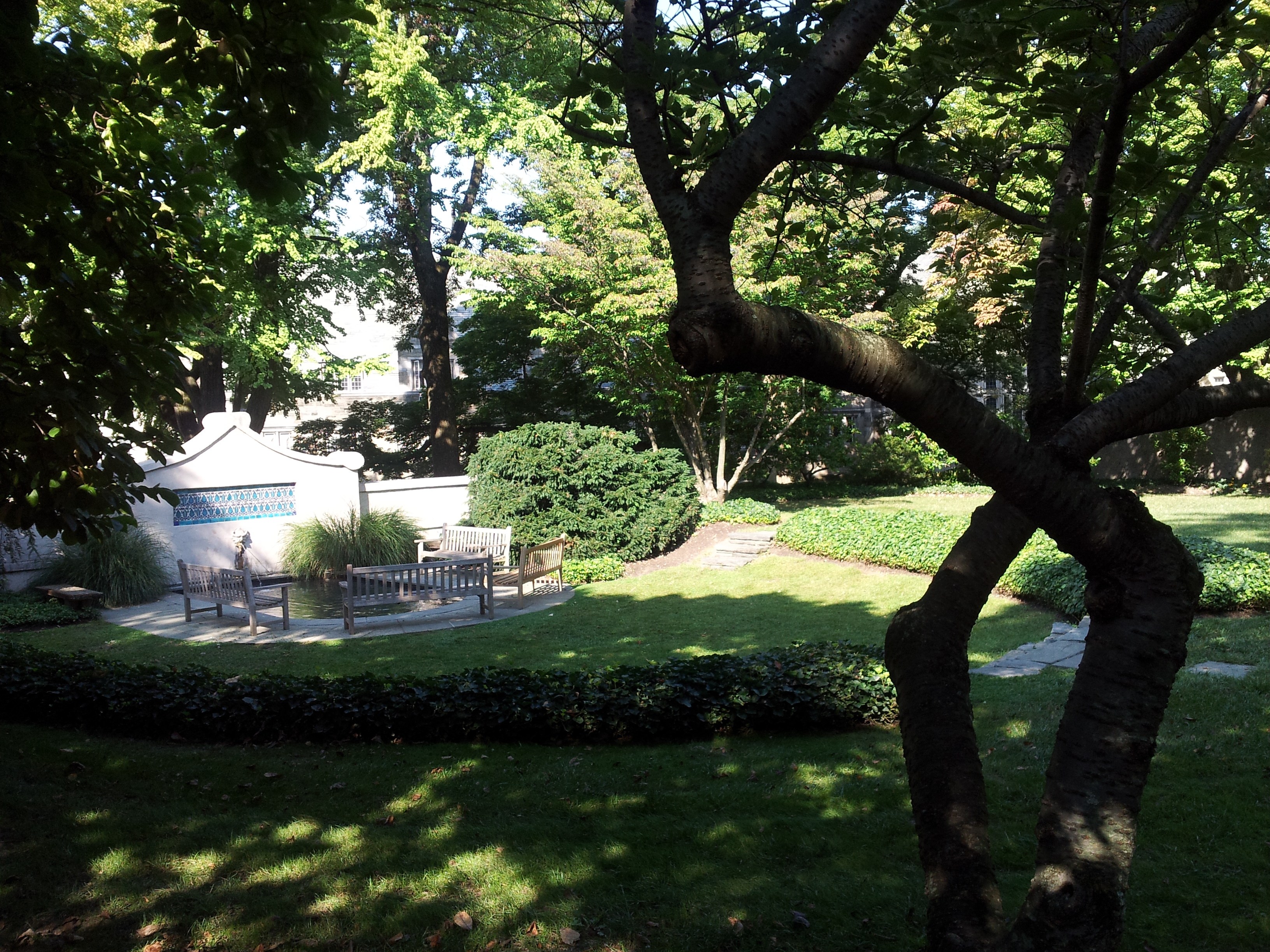Serendip is an independent site partnering with faculty at multiple colleges and universities around the world. Happy exploring!

Meditative Moments: Reverie in Taft Garden

Meditative Moments
"We do not see things as they are, but as we are" - Anais Nin

Names and Images
Though "Prisoners of a Hard Life" shared various statistics and facts about incarcerated women, it was not the numbers nor the narratives but the images, particularly the faces and bodies of the women, on which I want to comment. The graphic-novel style of work adds a dimension to the stories of these five women that I'm not used to seeing. In grayscale, the women come to life and, were I able to take the figures out of the harsh words of the pages and environments of the panel, it would be easy enough to insert them into a children's book--as just another illustration of a woman. In this, I think the authors allow the reader to see the humanity of women who are used to being seen as criminals first and women and mothers as a distant second and third. The ink drawings make it easier to notice similarities between people instead of focusing on differences like race or class indicators like style of dress. The stories of these five women are each unique, but, through the medium of the graphic novel, more so than the photographs or other outside images that are included, it is easy to recognize that the women in the panels are more than their childhoods, their crimes, their addictions, their race, their poverty, or any other factors I may have previously focused on to define them.

Incarceration and Choice
One of the themes that weeds through all our classes is the notion of choice. We choose to be silent; we choose to have a voice; we choose to live the kind of lives that we do. After reading "Prisoners of a Hard Life" I find myself really annoyed at how the notion of choice, despite how much people want it to have a positive spin, is ultimately used against us: somtimes by others and sometimes by ourselves . When we talk about incarcerated women, in particular, the idea of choice has really had negative consequences on how they are viewed in society. Incarcerated women: choose to be criminals, choose to drop of school and a consequence choose to work in below mininum wage jobs, choose to be teen mothers, choose to have their children taken away from them, choose to be involved in abusive relationships. Both my education and life experiences have taught me that the freedom of choice only goes so far. To argue that the individual chooses to live a life of poverty and shame is a gross failure to see the mutiple array of physical and metaphorical road blocks that women of all walks of life must face before making a decision about the road they must take to better themselves and their lives.

For us visual learners
Each of our texts this week provides powerful anecdotes and statistics regarding the history of women in the American justice system. I was particularly taken by the story of Alice Clifton, the slave tried for murder of her own child. To connect her story back to the similar story of Regina McKnight presented in “Prisoners of a Hard Life (The Real Cost of Prison Project)” was particularly heartbreaking. How long has this injustice been going on? How long will it continue?

Internet Identity
Part of me struggles with keeping my real name as a part of my user name. Just the other day, one of my Customs babies told me that they found me on this thing called Serendip.
!!RED FLAG!!
That was my first thought. I felt "found out". Stumbling over my words, I tried to explain that it was for class, my posted opinions solicited by the requirements of academia, so on. She responded with silence -- politely listening to my ramblings. And it was her silence that tipped me off to something. I had nothing to be ashamed of, nothing on Serendip that warranted my sudden reaction. Every thought here is something that I would feel comfortable sharing off the net, too.
I'd considered changing my name to something more obscure since the beginning of the semester, but I realize now that that is unnecessary. I'm not ashamed of what I have to say, and I don't feel as though my privacy is breached by allowing non 360-ers to read it. By detaching my name, I would be in a way stifling my own voice.

Race: Still Relevant?
I was interested in Gross' statement about how a white factory worker named Gabe Blum asserted that black men were the most intelligent and honest of workers but didn't have access to more job opportunities simply because of the color of their skin (47). It makes me think about how some people think we actually live in a post-racial society. I find it hard to agree with that idea because of the institutional racism that still exists in our world. It's subtle racism - the policies we maintain in certain instituational settings may not be made purposely to discriminate against a particular group of people, but the outcome is that it does. I volunteer at an organization where I help my clients access social services, and I was helping one of my clients apply for a job at a retail store. The questionnaire on the store applications are unnecessarily tedious and repetitive, but at one point it asked for my client to identify her race. Although it was ultimately her decision whether or not to disclose that information, I still felt annoyed that that was even a question. Why did I have this nagging feeling that if she indicated that she is black, it would be a huge factor in whether or not she would get the job? If a white man were competing with a black man to get a job, who do you imagine would get the job? I acknowledge the fact that other factors are considered when employers look at different applicants but can we really say that race has nothing to do with it? I feel like this situation would have the potential to involve racism, but it's so subtle.
Avatar
For my avatar I chose an image that shows the surface of water. I went back and forth about putting a picture of me, but because I was unsure about the level of anonimity I want to maintain on serendip, I decided that I could always do that later. I chose this image because when you are looking down at a surface of water, you can see a general picture of what's beneathe, but it's not completely clear. This is sort of how I see my presence on serendip at the moment. I am trying to put myself "out there" (online, where anyone can see), while still trying to maintain a boundary (I'm just not quite sure what that boundary is yet). My view my username "sarah" similarly. Everyone (or at least most people) in our class know who I am when I post, but if a random person were to go on serendip, the name "sarah" isn't very informative because it's so popular. Both my username and avatar allow me to express myself, while still maintaining some sense of privacy.

12Sept2012Vision1: Noticing "Colored Amazons"
Gross makes an observation in the introduction of Colored Amazons that's stuck with me as I read about these cases and their history. "For most [of these women], their criminal records serve as the only documentation of their lives." (pg.4-5) It strikes me in a way that I cannot shake. We, after all, live in a time where we are constantly anxious of the legacy we may leave--may it be by the "greatness" or change we want to bestow on the world, or even by becoming paranoid over the paper-trail we leave on the internet. In other words, we understand that we have a history and constantly think about it.
These women, however, would have almost never existed. They were given no birth certificates, no social security code, no formal identification of any kind was given to them when they were first born to let us know that they were born and continued to lead lives. Instead, we were close to not acknowledging their presence on this earth and to being blind at their imprint on the world.





